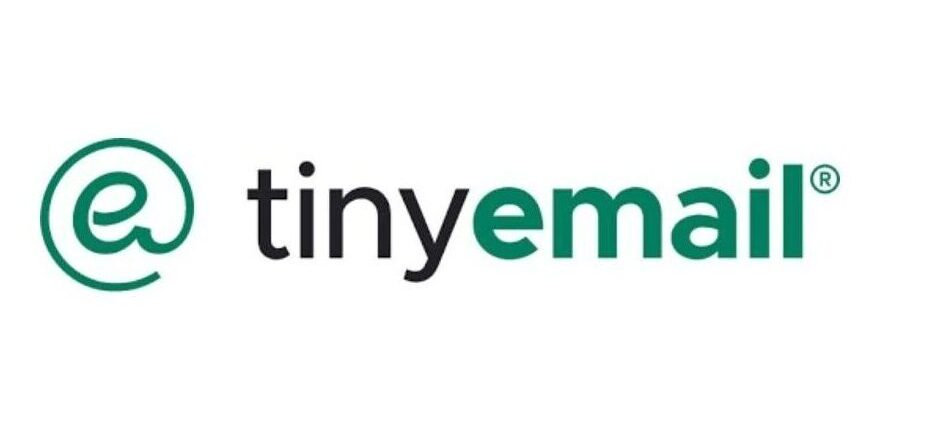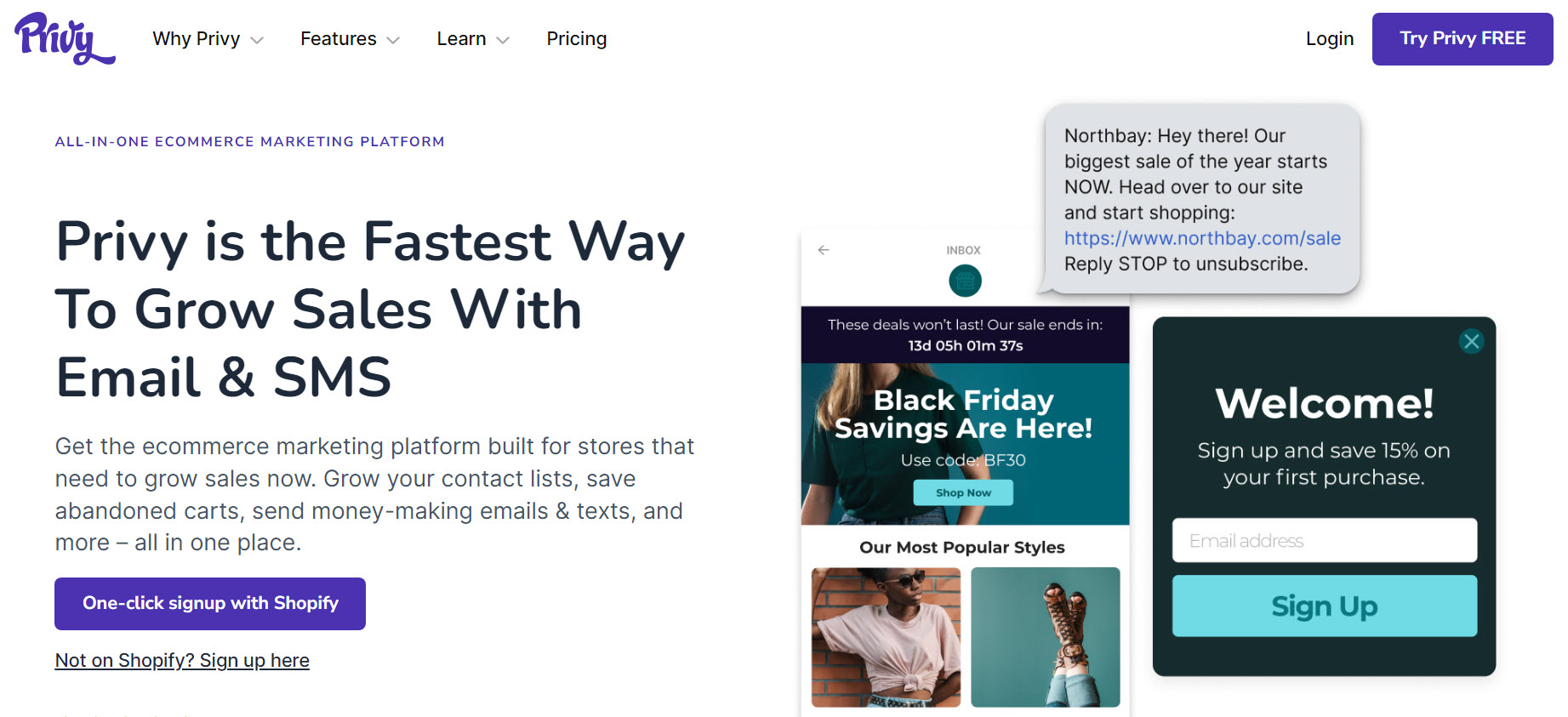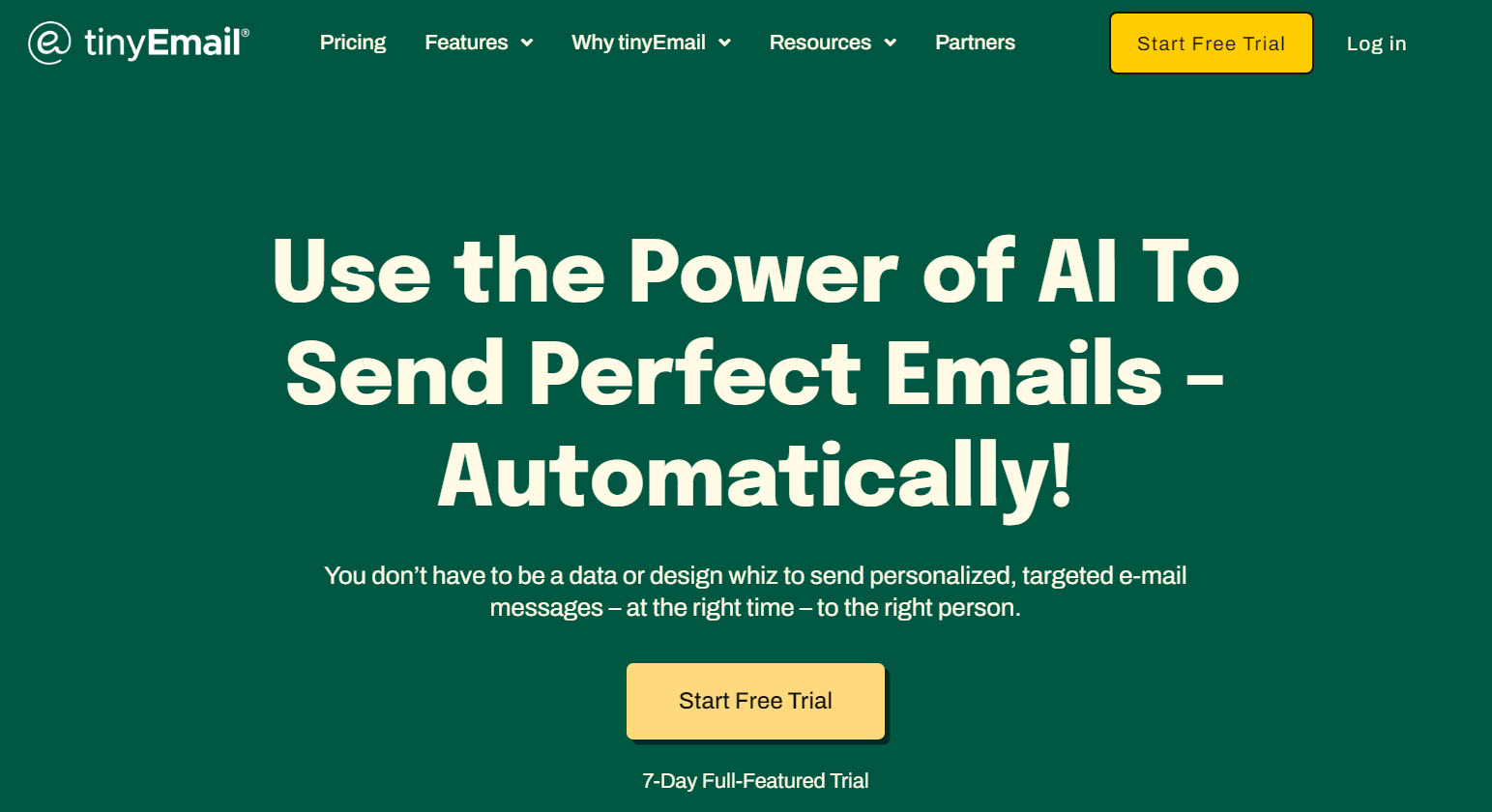Flodesk is undoubtedly gaining traction as a sought-after email marketing platform. However, before declaring it the ultimate choice, it’s worth taking a pause.
Numerous Flodesk competitors provide various features, often at a more appealing price or flexibility. This article will explore the top three platforms to elevate your email marketing endeavors. By investigating alternatives to Flodesk, you might stumble upon a game-changer— a tool that empowers email campaigns with wanted functionality.
Ready to dive in? Let’s begin.
Quick summary of the top three Flodesk alternatives
Best overall – Omnisend

Yes
$16
Robust automation
Gamification in signup forms
Unique coupon codes
Modern email templates.
Ecommerce
Omnisend is a powerful marketing tool that goes beyond email marketing. It lets you engage with customers through SMS, web push alerts, and platforms like Facebook and Google Ads. This helps you connect with customers where they like to be, leading to more sales.
Omnisend is great for online stores. It uses AI to suggest products based on what customers like, and it can help generate more sales.
It also offers unique features like personalized discount codes, interactive popups, and Campaign Booster. Plus, it works well with ecommerce platforms.
Flodesk doesn’t have these special features and isn’t as good at segmentation and automation as Omnisend.
Privy

Yes
$30
Signup forms
Nice templates
Good UX
Ecommerce beginners
Privy ranks among the most popular email marketing tools within the Shopify ecosystem. One of its standout attributes lies in its effective list-building popups and displays. Privy excels in assisting businesses to expand their marketing lists through engaging signup forms and landing pages.
Additionally, Privy’s robust segmentation feature empowers businesses to send automated campaigns to specific and well-defined audiences.
However, it’s important to note that the platform may not be the ideal choice for every type of business. It’s suitable for bloggers, solopreneurs, and ecommerce beginners. For better-established companies, Privy may not be sufficient enough.
Best cheap alternative: tinyEmail

Yes
$15
Generative AI tools
Nice templates
Easy to use platform
Small ecommerce businesses and email marketing beginners
tinyEmail is like a minor brother of Omnisend. This platform has a very similar interface and features. The only thing is that it’s not as comprehensive as Omnisend and is much more affordable.
tinyEmail has an extensive library of beautiful email templates, so switching from Flodesk, you won’t feel drastic changes in this regard.
tinyEmail has better customer support, more integrations with ecommerce and other platforms, and reasonable pricing. However, you should be ready to look for different solutions for landing pages because, so far, tinyEmail doesn’t have any, and compared to Flodesk, it lags behind.
Best Flodesk alternatives in a nutshell
Here is a quick overview of the best Flodesk alternatives out there.
Now let’s discuss these Flodesk alternatives in detail.

Image via Omnisend
Omnisend emerges as one of the top email marketing tools, with a strong focus on email and SMS marketing tailored for ecommerce businesses. It proves to be an exceptional solution for businesses aiming to actively engage their audience and drive conversions. If you run an ecommerce store and use Flodesk up till now, this alternative will be a game changer for your business.
Let’s explore some of the standout features that position Omnisend as one of the premier alternatives to Flodesk.
Omnisend excels in several aspects, including top-notch customer support, a user-friendly platform, and a range of ecommerce-specific features such as:
- Campaign Booster: automatically resend campaigns to recipients who haven’t opened the first email.
- Product Picker: easily incorporate products from your store directly into your emails. tinyEmail has a very similar feature for Shopify users.
- Unique discount codes: generate individual discount codes for campaign recipients and avoid discount code abuse.
- Advanced marketing automation: the most powerful features among platforms on this list.
- Comprehensive reporting: gain deep insights through advanced analytics on sales, customer lifecycle stages, and more.
Notably, Flodesk lacks all these features mentioned above.
Building email campaigns
Let’s compare their features when it comes to creating email campaigns.
- Email templates: Both tools have a user-friendly email editor and a variety of beautiful templates. However, there are a few differences. Flodesk mainly targets creators, solopreneurs, and bloggers. As a result, the templates are tailored to welcome subscribers and introduce various elements. Meanwhile, Omnisend is ecommerce-focused, so on this platform, you will find templates for various promotional purposes and occasions. Additionally, Flodesk offers robust email design opportunities, while Omnisend doesn’t. This platform provides content blocks necessary for selling products, such as product recommenders, product content blocks, timers, etc.
- Segmentation and targeting: One of the biggest differences between Flodesk and Omnisend is customer segmentation. Flodesk, in this regard, looks very basic, while Omnisend is a powerhouse. Here you will find multiple ready-to-use segments and triggers for onsite behavior, customer lifecycle, email and SMS engagement, etc.
- Personalization: Both platforms offer personalization via merge tags. However, more precise targeting, and Product Recommender on Omnisend allows you to do more.
Marketing automation
Omnisend offers ready-to-use automation workflows that can be activated within minutes, as they come with pre-set rules and content, saving you significant time.
While Flodesk offers a few very basic automations, on Omnisend, you will find 30+ of them for most often business cases and scenarios.
Moreover, Omnisend provides advanced features like conditional splits, a wide selection of triggers, and the inclusion of SMS and web push notifications within your automation workflow.
Forms and list management
Similar to Flodesk, Omnisend provides an extensive selection of ready-to-use signup form templates that can be instantly activated. These templates feature trendy designs and compelling copy, allowing you to efficiently allocate your time to more critical tasks.
Furthermore, Omnisend offers a captivating signup form known as the ‘Wheel of Fortune,’ which has proven to be highly effective in attracting signups. Flodesk doesn’t have this.
Both platforms excel in providing valuable analytics concerning new signups and form performance.
However, it’s crucial to highlight a significant distinction related to landing pages.
Flodesk offers landing pages with a checkout function, while Omnisend doesn’t. This is one of the biggest drawbacks of this platform when compared to Flodesk.
Compatibility with other marketing channels
Why is Omnisend considered one of the top alternatives to Flodesk?
Omnisend seamlessly integrates email, SMS, and web push notifications into a unified communication strategy. Additionally, you can effectively retarget cart abandoners through Facebook and Google Ads. These capabilities are unavailable in Flodesk, making the transition to Omnisend a means to expand your reach across various communication channels.
Price
Flodesk’s pricing is flat, so it’s easy to understand. However, the price for beginners might be slightly higher than other email services.
Omnisend’s pricing is more complicated. The platform offers tiered pricing, which mainly depends on the number of subscribers. Omnisend unlocks the vast majority of its features to all users. The only limitation is email sends. The bigger your contact base, the more you have to pay for your plan.
While Flodesk starts at $38 per month for emails and $64 per month for ecommerce features, at Omnisend, you can start from $16 per month for all features, including SMS. Omnisend is cheaper than Flodesk’s email plan until you reach 2,000 contacts on your list. And if you use Flodesk ecommerce features, Omnisend is more affordable until you reach 4,000 contacts.
Why choose Omnisend instead of Flodesk?
If you are in the ecommerce industry, Omnisend stands out as the top alternative to Flodesk. It is particularly well-suited for online stores, offering a range of features customized to meet ecommerce needs. These include:
- Automated product recommendations
- Ready-made templates for automation and forms
- Unique discount codes
- Segmentation based on onsite and purchasing behavior, etc.
Omnisend is also renowned for its robust reporting capabilities.
While Flodesk primarily focuses on email marketing, Omnisend provides a comprehensive suite of communication channels, including email, SMS, and web push notifications, as well as integration with Facebook and Google Ads.
Why choose Flodesk instead of Omnisend?
Flodesk pricing is more affordable than Omnisend’s if you have an extensive database of email contacts. So, if you need only regular email campaigns, go with Flodesk.
Also, Flodesk offers top-notch landing pages with a checkout function. Omnisend doesn’t have this.
The third reason not to choose Omnisend is your different needs. If you don’t do ecommerce, Omnisend perhaps is not the best choice for you. There is no need to pay for features that you don’t need. Other alternatives might fit your needs better.

Image via Primy
Privy was initially built as a platform for signup forms. As a result, Privy has very well-developed signup forms and landing pages. However, over the last couple of years, their team has been working hard on new features and functionality, and it now resembles a decent email marketing platform for small businesses. Let’s take a closer look at what they offer.
Features that stand out
- A/B testing form signup forms (only a few platforms like Klaviyo and Omnisend offer this feature so far)
- Interactive signup form “Spin to win”
- Coupon element in the email
- SMS channel for multi-channel marketing approach (so far, there is no way to combine email and SMS in the same automation to implement omnichannel strategies)
Building email campaigns
- Email templates: A collection of 20+ email templates is available in the gallery. While the existing templates look good, having a more extensive variety of them would be beneficial. Currently, they are quite similar in style and don’t cater to all occasions.
- Segmentation and targeting: Privy’s segmentation is more robust than Flodesk’s. Privy provides four pre-built segments: current customers, engaged customers, potential customers, and unengaged ones. The segmentation options are extensive, including criteria such as shopping activity (lifetime spend, order value, order count, etc.), website behavior, customer attributes, and email engagement.
- Personalization: Privy is very similar to Flodesk. Personalization available with merge tags.
Marketing automation
Like Flodesk, Privy offers basic automation and a few automation workflows. There is no flexibility to change them or adapt to your needs. The workflows are tailored for ecommerce needs, like welcome, abandoned cart, win-back, follow-up emails, etc.
However, Privy goes a step further by offering an SMS. So you can choose whether to send email or SMS for certain occasions.
Forms and list management
While Flodesk offers a wide variety of forms but has quite limited functionality, Privy shines at everything related to signup forms and landing pages.
The extended list of rules to signup form to appear, the library of beautiful forms, and a wide variety of types–Privy has it all.
A great editor and gamified signup forms will make your list-building task easier.
Compatibility with other marketing channels
With Privy, you can send SMS for an extra charge. No other channels are available so far.
Price
The free plan is designed for users with up to 100 contacts, making it perfect for absolute beginners just starting from scratch.
It’s worth noting that you can use popups for free. However, in general, Privy is considered a relatively expensive solution. Let’s take a closer look at it.
Privy’s price depends on features and the contact list you have. If you need only email marketing features, the price starts at $30/month and lasts until you reach 1501 contacts on your list. The next payment is $45/month, which is already more expensive than Flodesk. However, with a Started plan you will get all the necessary list-building, email campaign, and automation features. So it is sufficient for many businesses.
Why choose Privy instead of Flodesk?
Privy offers a similar level of comprehensiveness to Flodesk. However, Privy boasts more ecommerce-focused features and greater flexibility in list-building opportunities. If you miss these aspects on Flodesk, consider switching to Privy.
Why choose Flodesk instead of Privy?
Privy is generally a more expensive platform. If you’re not prepared to invest more at this time, it might not be the right moment to make a switch.

Image source: tinyEmail
Features that stand out
- tinyEinstein: the AI tool for Shopify businesses. It helps to generate email content, style, subject lines, etc.
- An extended email template gallery: tinyEmail offers 600+ email templates for various occasions.
Building email campaigns
The email campaign wizard offers an intuitive and well-designed experience, making it easy to add campaign details and begin crafting your campaign.
The email builder stands out with its flexibility. It offers elements like timers and image carousels, a clear structure, and a straightforward editing process. Additionally, an AI text generator and a stock image library are available for users who lack visuals and need help crafting engaging email copy.
On the tinyEmail platform, there is the possibility to create Smart Elements and Product Cards. However, there is room for improvement in the user experience with these elements at the moment.
tinyEmail offers an impressive gallery of email templates featuring designs for various occasions and business cases. These templates have a modern and visually appealing look. So, if you are transitioning from Flodesk, you shouldn’t have trouble finding something that suits your needs.
As of October 11, 2023, tinyEmail only supports regular email campaigns. A/B testing is not yet available. However, they have notifications about SMS campaigns coming soon, so it’s worth keeping an eye on their updates.
Marketing automation
TinyEmail’s automation features are quite limited and basic. They offer only a few automation workflows, which are primarily designed for Shopify users (except for the welcome workflow, which is available to all users).
Unfortunately, you can’t customize the automation logic, and the only option is to activate the suggested flows without making any changes to the logic or content.
While there are several templates available, such as an abandoned cart, thank you messages, product reviews, win-back flows, and welcome series, these automations are exclusively tailored for Shopify platform users.
Regarding marketing automation, Flodesk, with its modest automation capabilities, is a step ahead because it is ecommerce-platform-agnostic, allowing all users to use automation regardless of the ecommerce platform they use.
Forms and list management
tinyEmail provides a library of form templates, including embedded forms, popups, and flyouts. While the forms look good, they can be somewhat challenging to adjust due to the limited editor. Flodesk offers a better editor in comparison.
Another important point to highlight is that tinyEmail doesn’t have landing pages available on the platform. This limitation can be significant for marketers relying heavily on Flodesk’s checkout pages.
In terms of list management, tinyEmail offers a clear interface and allows you to gain insights into your audience’s composition, including the sources of your subscribers. However, the depth of insights into your audience is somewhat limited.
Overall, the form builder has room for improvement, including adding more flexibility and making it easier to use. Additionally, it’s worth noting that forms need to be manually added to your website source, as they don’t launch automatically.
Compatibility with other marketing channels
Regarding compatibility with other marketing channels, Flodesk and tinyEmail match. There are no available marketing channels other than email on tinyEmail. However, platform notifications indicate that SMS functionality is planned to be added soon.
Price
Unlike other platforms on this list, tinyEmail pricing is based on monthly email sends. Compared to other platforms, the price looks reasonable: for 15,000 emails per month, you will be charged $15, for 25,000 emails per month – $25.
If you are looking for a platform to send email campaigns and don’t need robust automation features or landing pages at the moment, tinyEmail can definitely be your choice.
Why choose tinyEmail instead of Flodesk
tinyEmail is a more affordable email platform than Flodesk or other options on this list. tinyEmail is good when you send a lot of regular emails and don’t need advanced techniques at the moment.
It has many good features and might be sufficient for small business owners, solopreneurs, bloggers, NGO’s and many other email senders.
Why choose Flodesk instead of tinyEmail
Flodesk, up to this point, is a more ecommerce-platform-agnostic tool, while tinyEmail is closely tied to Shopify. The majority of its features are designed to work exclusively with Shopify. If you have nothing to do with this platform, you may want to consider other tools.
Alternatives to avoid
Considering that you are looking for alternatives to Flodesk, we suggest avoiding Remarkety and Aweber. These platforms aren’t as strong in modern designs and creatives, so you will experience a significant difference in aesthetics.
Flodesk alternatives: Summary
And there we present — the three prime alternatives to Flodesk.
While deciding on a platform, it’s crucial to factor in your business needs and financial constraints. It’s also advisable to contemplate your enduring marketing blueprint.
If you foresee branching out your marketing across various channels, opt for a platform geared towards an omnichannel strategy.
Furthermore, select a platform boasting templates and aesthetics that resonate with your brand, ensuring time efficiency.
In-depth Reviews
Related picks for you
Our team strives to be accurate and unbiased in reviewing email tools. However, we recognize that mistakes can happen, and it’s essential for us to stay up to date. If you come across any errors or things that need to be reviewed again, please let us know.


